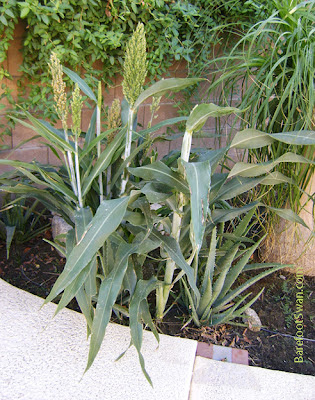(with apologies to Monty Python...)
Yesterday morning we heard a new bird calling in our front yard. We looked around and located the source - a beautiful bright reddish-orange bird with a black face and belly, perched high overhead on the telephone wires. I had never seen this bird in person before, but I immediately recognized it (thanks to time spent aimlessly perusing my N.G. Bird Field Guide).
 |
| ORANGE BISHOP (top line, above House Finches) |
It was a male Orange Bishop.
He was "loosely associating" with some House Finches, who were waiting for us to fill the bird feeders. I ducked back into the house for the camera, and took 2 really bad photos before he and the finches spooked and flew off together.
The pics were super-zoomed and pretty blurry, unfortunately. We filled the bird feeders with hopes he would come back.
Orange Bishop is native to sub-Saharan Africa. They are a member of the weaver family (Ploceidae), so-named because of the intricately woven nests they build. Orange Bishop is smaller than a House Finch (~4" vs. 6"). As previously mentioned, the breeding male is bright reddish-orange and black. Female is very plain, and is often compared to Grasshopper Sparrow in bird field guides. Orange Bishop has a thicker, conical bill - black in males and fleshy pink in the females. Their tails are short and blunt.
Orange Bishop prefers open areas, especially tall grasslands near water. The species has become established in the Los Angeles area (1980's) and Phoenix (~late 1990's).
This morning I went out to get the newspaper, and I heard the bird calling again. He was up on the phone line, in the same place as yesterday.
I went back inside and got the camera. I took another bad picture, this time through a window and 2 trees.
ARRRRGHGHGH!!!
Here's how they actually look.
They are really handsome birds.
--------->>>>>
Image credit:
National Geographic
Field Guide to the
Birds of North America
Sixth Edition, page 528-29
New Life Bird.
New Yard Bird.
Pretty darn cool.
:-)
ANNOUNCER:
"And now for something completely different..."
~ Monty Python's Flying Circus






.jpg)



